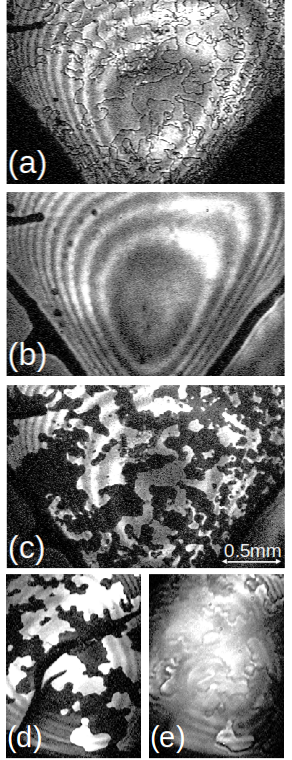Nonlinear optics

Nonlinear optics, in particular second harmonic generation, is our core technology for investigating correlated states of matter. This is mostly motivated by the correspondence between symmetry and functionality: The symmetry of a material determines the physical properties and coupling effects it may display, just as in turn any property of a material reflects its internal symmetry and structure. Nonlinear optics is a process entirely determined by symmetry. Thus, the magnetic and ferroelectric state of a multiferroic may be ideally investigated by a technique like second harmonic generation because it allows one to investigate the coexisting forms of order simultaneously and with the same technique, i.e., in a single experimental run. In addition the spatial and high temporal resolution inherent to an optical experiment allow one to investigate the distribution and coupling of domains and the ultrafast evolution of a magnetoelectric reversal process.
Aside from applying nonlinear optics to the investigation of correlated states of matter we are continuously working on advancing the methodical aspects of nonlinear optics for investigating these systems. For example, we are working on methods for characterizing nanoscopic domains (i.e. far below the optical resolution limit) by far-field second harmonic generation. Furthermore, we developed a setup allowing us to image the amplitude and the phase of a second-harmonic wave with high coherence, because often the information about the ferroic order parameter is "encoded" in the phase only (see picture above and Ref. 1).
Reference
- M. Fiebig, D. Fröhlich, T. Lottermoser, S. Kallenbach: Phase-Resolved Second-Harmonic Imaging with Non-Ideal Laser Sources, Optics Letters 29, 41 (2004)